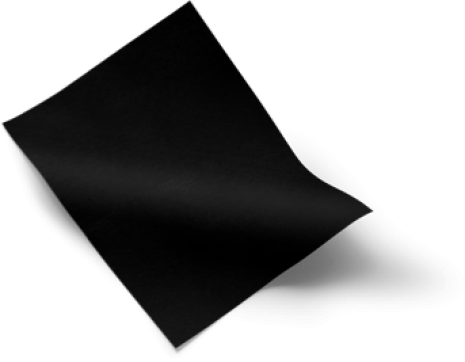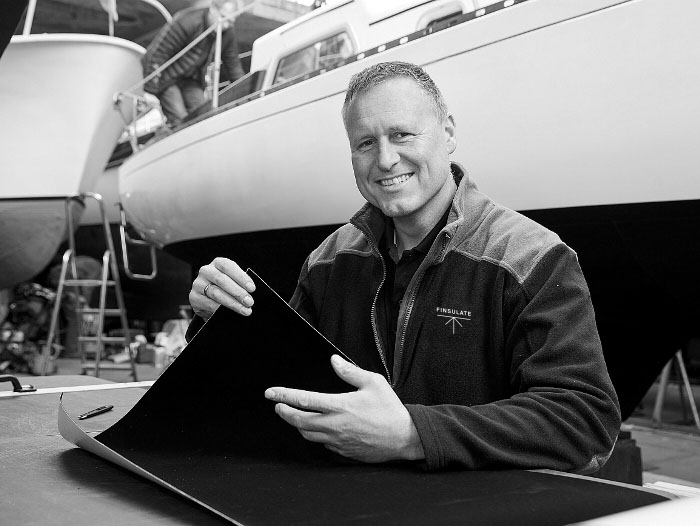It’s a fact that antifouling paints for your ship’s hull harm the environment because toxic components dissolve in the water. Certain biocides, such as copper and zinc, accumulate in sediments, affecting bottom-dwelling organisms. Biocides can harm beneficial marine organisms, including algae, corals, and shellfish, disrupting ecosystems. Numerous biocides degrade slowly, extending their impact on aquatic environments.
For those who like to read and understand antifouling packaging carefully, these are the most toxic additives to antifouling paint. Some ingredients are already banned in several countries.
Copper Oxide (CuO)and Copper Thiocyanate
These are the most widely used biocides in antifouling paints. Copper ions released from these compounds disrupt the cellular processes of marine organisms, preventing their attachment.
Environmental Impact: High concentrations of copper can harm non-target marine species, including fish and invertebrates, and accumulate in sediments, potentially causing long-term ecological damage.
Zinc Oxide (ZnO)
It is often used alongside copper-based biocides to enhance antifouling properties.
Environmental Impact: Zinc can also leach into the environment, contaminating sediment and causing toxicity to marine life.
Tributyltin Oxide (TBTO)
Once widely used due to its high effectiveness, it is now widely banned.
Banned: TBT has been banned under the International Maritime Organization (IMO) Antifouling Systems (AFS) Convention due to its extreme toxicity to marine life, causing deformities and reproductive failure in molluscs.
Environmental Impact: TBT remains in marine sediments, continuing to affect ecosystems.
Diuron
Diuron is a herbicide that prevents photosynthesis in algae and other fouling organisms.
Environmental Impact: It is persistent in marine environments and can harm non-target aquatic plants and organisms.
Irgarol 1051
Another herbicide commonly added to antifouling paints.
Environmental Impact: Highly toxic to algae and can affect coral reef ecosystems by inhibiting photosynthesis.
Dichlofluanid
A fungicide used to prevent fungal growth.
Environmental Impact: Persistent in aquatic environments and toxic to non-target species.
Sea-Nine 211 (DCOIT)
Mode of Action: A less persistent biocide than TBT, used as an alternative.
Environmental Impact: While considered a more environmentally friendly option, it can still cause acute toxicity in marine organisms during initial leaching.
Zinc Pyrithione
Mode of Action: A broad-spectrum antimicrobial agent targeting fungi and algae.
Environmental Impact: Although it breaks down more quickly than other biocides, it is still toxic to marine organisms during its active phase.
The Misunderstanding of Biocide-free Antifouling Paints
The new generation of antifouling paint is free of toxic biocides and is called a Silicone-Based or Fouling-Release coating. “Hurray!” everyone shouts, and the American Navy decides that the entire Fleet must switch to silicone-based coatings. We all want to help the environment. The idea behind silicon-based and biocide-free ship paint is that the surface becomes so smooth that algae can no longer grip the underwater hull. In theory, that is not a bad idea.
But the paint itself remains the weak spot. Biocide-free antifouling paints still contribute to microplastic pollution in marine environments. While eliminating harmful biocides, these paints still contain polymer-based binders that can degrade and release microplastic particles over time.
A study published in Frontiers in Marine Science highlights that marine coatings, including biocide-free variants, utilise polymers as binding agents. These polymers can shed microplastics into the ocean, especially during in-water cleaning operations.
Polymers and microplastic pollution
Biocide-free antifouling paints reduce the release of toxic substances. Still, they are not entirely free from environmental impact due to the potential shedding of microplastic particles from the paint. Silicone-based coatings may release fewer harmful chemicals than biocidal antifouling paints, but due to their polymeric nature, they still contribute to the problem of microplastic pollution.
The coating uses a specific polymer to create a slippery, low-energy, and fouling-resistant surface on the underwater ship. Foul-release antifouling coatings contain three types of Polymers.
Silicone-Based Polymers
Polydimethylsiloxane (PDMS) is the most commonly used polymer in foul-release coatings. PDMS provides a smooth, hydrophobic surface that reduces the adhesion strength of fouling organisms. Organisms that do attach can easily be removed by water flow or gentle cleaning. Low surface energy (~20-24 mN/m) reduces fouling species’ adhesive strength and flexibility to accommodate the movement of large marine vessels.
Fluoropolymer Additives
Polytetrafluoroethylene (PTFE) or fluorinated silanes have extremely low surface energy and are often incorporated with silicone polymers to enhance performance. They provide improved durability and resistance to abrasion.
Hydrogel-Based Polymers
Some foul-release coatings integrate hydrogel layers that absorb water, creating a slippery, hydrated surface. Hydrogel-based Polymers mimic biological anti-adhesive surfaces found in nature (e.g., fish mucus). They give ultra-low friction and enhance antifouling performance without biocides. The Advantages of Foul-Release Polymers seem convincing at first glance.
Environmentally Friendly
No toxic biocides are released, reducing harm to marine ecosystems.
Durability
Long-lasting performance, typically requiring reapplication only after several years.
Reduced Fuel Costs
Keeps hulls smooth, reducing drag and improving fuel efficiency.
How biocide-free is biocide-free antifouling?
The reality is that even biocide-free silicone-based antifouling paints can contribute to microplastic pollution through the degradation and wear of the paint itself.
Silicone-based polymers can be prone to mechanical damage or wear over time. They are also more expensive than biocidal antifouling coatings. Plus, they are limited in effectiveness in areas of high biofouling pressure or during stationary periods.
Polymeric paint particles represent a significant and often overlooked source of microplastic pollution in marine environments. Their complex chemical composition and persistence pose substantial risks to aquatic ecosystems and human health. The SMED (Swedish Environmental Emission Data) report 2023 explains how Microplastic Emissions from Polymers in Paint play a significant role in pollution.
Before making an eco-friendly decision, study the ingredients list to see how biocide-free the antifouling paint is. Never judge a book by its cover; read the content. You will be surprised by how many ingredients are still considered biocides. One active biocidal ingredient in biocide-free antifouling is copper pyrithione, known for its antimicrobial and antifouling properties. This substance is toxic to aquatic life and classified under the biocidal product category due to its specific applications in fouling defence.

The solution is a revolution
The discussion about biocide-free antifouling paint forces people to take a more comprehensive approach to ongoing microplastic pollution. We need a better solution for a growing problem. Marine pollution with microplastics poses significant threats to ocean ecosystems. Among the various sources of microplastics, antifouling paint particles have garnered attention due to their widespread use in maritime activities.
Finsulate is the only revolutionary, eco-friendly antifouling technology based on marine life. It involves wrapping foil around the ship hull with millions of little spikes, like urchins, to protect the ship in the most natural way possible. Contact us now for more information about a long-lasting environmental antifouling solution with an 8-year warranty for yachting, commercial marine and offshore clients.




